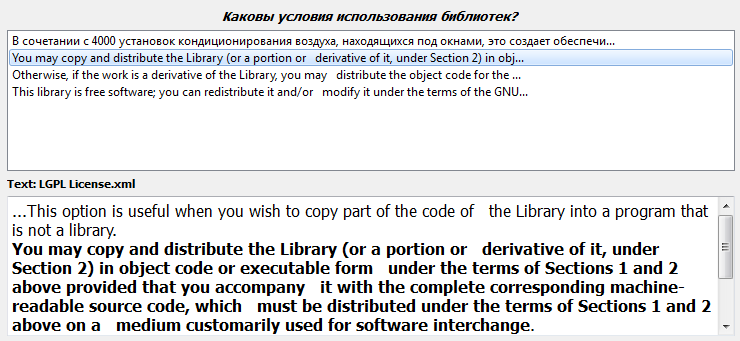ABBYY Labs. Q & A: the beginning
 The new school year has just begun, and we already have something to write about ABBYY Labs.
The new school year has just begun, and we already have something to write about ABBYY Labs.ABBYY Labs? What is it?
The idea of student laboratories is very simple: we assemble a team of students who are engaged in problem solving under the guidance of our specialists. At MIPT, this takes place as part of the annual course “Innovation Workshop”. The goal of the project is to enable students in the learning process to solve problems that are more close to real than it happens in the normal learning process. And “immerse” them at the same time in the appropriate environment: the environment in which the development takes place is a real-life IT company.
Past projects
Formula Recognition
Formulation of the problem: Student laboratories ABBYY
Student laboratories ABBYY
The solution of the problem: ABBYY Labs - what's new?
ABBYY Labs - what's new?
Formulation of the problem:
 Student laboratories ABBYY
Student laboratories ABBYYThe solution of the problem:
 ABBYY Labs - what's new?
ABBYY Labs - what's new?This time the students were divided into 2 groups for parallel work on 2 projects with the working titles “LingvoGames” and “Q & A”. The first project is a mobile application for Android. Moreover, the game! About her, there will definitely be a separate post after it hits the
When a Q & A project was presented as part of an innovative workshop at MIPT (Faculty of FIVT), a team quickly recruited it. This, of course, is not surprising, although there were quite a few competitors. But what is surprising is that the praise of the practical work has already gone beyond the limits of the FIVT: 4 out of 8 students have recruited the project from the FOPP (faculty of general and applied physics), in which there is no such course. Where to go - they took the guys, of course.
According to the project curator Alexey Shtukaturov (head of Lingvo development, a teacher at MIPT), the guys were surprisingly well-organized, especially considering the size of the team. For 2 months of work, we achieved quite good results and are clearly not going to stop there.
For writing an application that will allow a large amount of text to find the answer to a question, the guys were given the opportunity to use a linguistic parser based on ABBYY Compreno technology (a little more about this can be found in
 Answers ABBYY CEO Sergey Andreev to questions from readers Habr. Part 1 ). Applying the parser to parse the available texts, implemented 2 different algorithms (in order to choose the best in the end), the task of each of which is to find a sentence containing the answer to the question. The question is, of course, in natural language, where do without it. Yes, and classic texts. And it works pretty well, see for yourself:
Answers ABBYY CEO Sergey Andreev to questions from readers Habr. Part 1 ). Applying the parser to parse the available texts, implemented 2 different algorithms (in order to choose the best in the end), the task of each of which is to find a sentence containing the answer to the question. The question is, of course, in natural language, where do without it. Yes, and classic texts. And it works pretty well, see for yourself:')

To get answers to such questions, the system automatically receives information about the structure of the sentence and uses a tree of concepts (this tree is a universal hierarchy of concepts and a model of relations between them). This tree is needed for the search to understand that the gravitational field is usually not sown with corn. And, I must say, quite understand. The “side effect” of the “understanding” of the text is the possibility of posing a question in one language with getting an answer in another.

An innovative workshop , in which work on the project is taking place, has a very unusual goal for higher education: not only developing an application, but selling it (do not try to find references to this fact by reference, but the way it is - students will confirm). In this regard, the further development of the project is seen by the participants in the form of developing a web framework that will allow the owners of forums and other Internet spaces to “tie” a smart search to their bases.
So if it is interesting to you and you are ready to support students with their ruble initiatives, follow our blog, we will announce the readiness of the product.
Source: https://habr.com/ru/post/150273/
All Articles